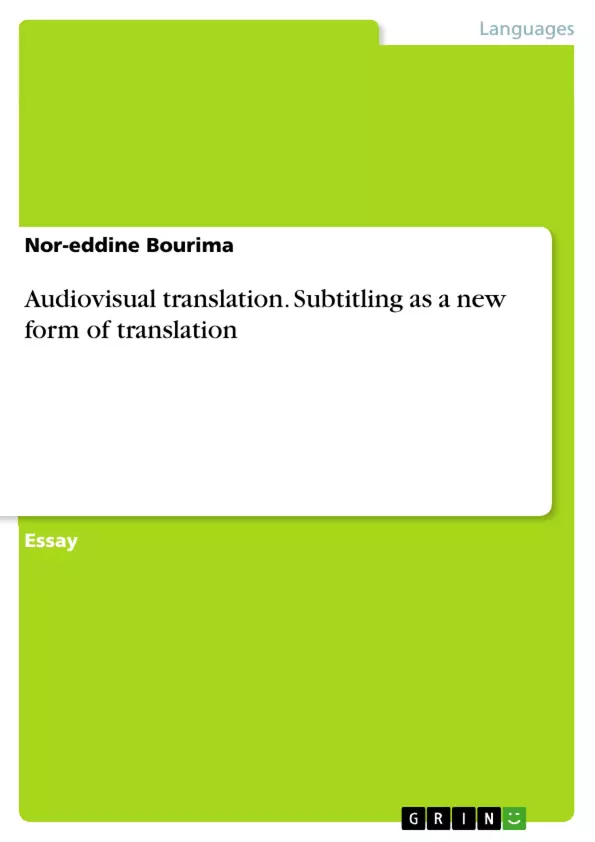This article sheds light on subtitling as one of the most important forms of translation which has a huge impact on modern communication worldwide. If written text-translation has ruled over intercultural communication over the previous centuries, subtitling drives most of the modern contemporary audiovisual productions proliferating in this globalized world, where international dialogue and interlingual communication have become so complex and so vitally important. In this perspective, the technological and artistic innovations advanced in the twentieth century such as the film industry and television broadcasting made imperative the emergence of new forms of translation such as subtitling, dubbing and drama translation.
Inhaltsverzeichnis (Table of Contents)
- Introduction
- Preliminaries
- Subtitling: a unique form of translation
- Some peculiarities of Subtitling
- Conclusion
Zielsetzung und Themenschwerpunkte (Objectives and Key Themes)
This article aims to shed light on subtitling as a vital form of translation in today's globalized world, highlighting its impact on communication and the challenges it presents to translators. It explores the evolution of subtitling as a distinct field of translation, examining its unique characteristics and the key differences it exhibits compared to traditional text translation.
- The emergence of subtitling as a key form of translation in the audiovisual age.
- The sociocultural aspects of translation and the importance of understanding both source and target language and culture.
- The unique challenges posed by subtitling, including the need to adapt spoken language to written form, reduce dialogue for spatial and temporal constraints, and consider the broader audiovisual context.
- The ongoing debate about whether subtitling constitutes a distinct form of translation or simply a specialized type of text translation.
- The growing role of subtitling in promoting language learning, cultural exchange, and accessibility.
Zusammenfassung der Kapitel (Chapter Summaries)
- Introduction: This section introduces the topic of subtitling, highlighting its increasing importance in a globalized world where audiovisual productions are proliferating. It emphasizes the unique demands placed on translators working in this field.
- Preliminaries: This section discusses the broader context of translation, emphasizing the need for translators to possess not only linguistic competence but also sociocultural knowledge. It highlights the shift from sentence-level analysis to text-based approaches in translation studies.
- Subtitling: a unique form of translation: This section explores the specific challenges of subtitling, including the need to adapt spoken language to written form, manage spatial and temporal constraints, and maintain coherence and understanding. It also examines the debate surrounding whether subtitling can be considered a distinct form of translation.
- Some peculiarities of Subtitling: This section delves deeper into the unique aspects of subtitling, comparing and contrasting it with traditional text translation. It emphasizes the need for substantive reduction of dialogue and the importance of considering the broader audiovisual context.
Schlüsselwörter (Keywords)
This article focuses on audiovisual translation, subtitling, interlingual subtitling, spoken language, written language, spatial constraints, temporal constraints, dialogue reduction, translation studies, sociocultural aspects, language competence, cultural competence, audiovisual context, translation theory, and translation practice.
- Quote paper
- PhD Nor-eddine Bourima (Author), 2015, Audiovisual translation. Subtitling as a new form of translation, Munich, GRIN Verlag, https://www.hausarbeiten.de/document/342766


